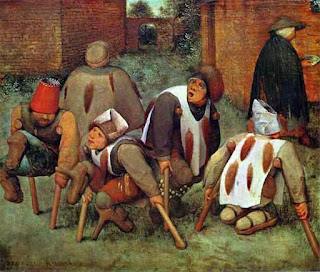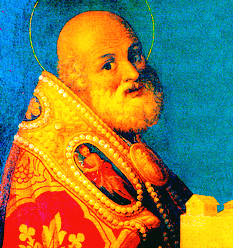Incendium Amoris ["The Fires of Love"] was one of his most popular in later years. We still have 44 copies, one-third of them from outside England. In it he describes the stages of mystical experience that he perceived, the first of which was the purgative stage he called "open door." In it one has to purge oneself of all worldly thoughts that would stand between yourself and the divine. Then came the stages of calor, canor, and dulcor.
Calor was the first experience of mystic contemplation, what they called illumination; it is a glimpse of heavenly glory felt as heat:
I call it fervour when the mind is truly ablaze with eternal love, and the heart similarly feels itself burning with a love that is not imaginary but real. For a heart set on fire produces a feeling of fiery love. [Penguin Classics, translator Clifton Wolters]
Canor, or song, became the most constant and important to him. As he first described it in "The Fires of Love":
I call it song when there is in the soul, overflowing and ardent, a sweet feeling of heavenly praise; when thought turns into song; when the mind is in thrall to sweetest harmony. [Ibid.]
Last was dulcor, always a part of the other two:
This twofold awareness is not achieved by doing nothing, but through the utmost devotion; and from these two there springs the third, for unspeakable sweetness is present too. Fervour and song bring marvellous delight to a soul, just as they themselves can be the product of very great sweetness. [Ibid.]
Some of his other works:
* Readings in the Office of the Dead taken from the Book of Job. It was popular enough to be printed in 1483 in Oxford and was used by clergy in York in the 15th century. It survives in 42 manuscripts.
*Commentary on the first 2.5 verses of the Song of Songs, of which we still have 30 manuscripts.
*Twenty manuscripts exist of Commentaries on the Psalter, in both Latin and English. The English version was for Margaret Kirkby, and was the only English translation of (part of) the Bible for 200 years.
*The Form of Living, written as a guide for Margaret Kirkby, exists in 30 manuscripts.
His writing was enormously popular, copied and shared for several generations.
Not all authors of mystic writing are known to us; some maintained anonymity, whether through humility or simple obscurity. One such author, writing shortly after Rolle, produced a work of Christian mysticism with the evocative title, The Cloud of Unknowing. That will be next.































